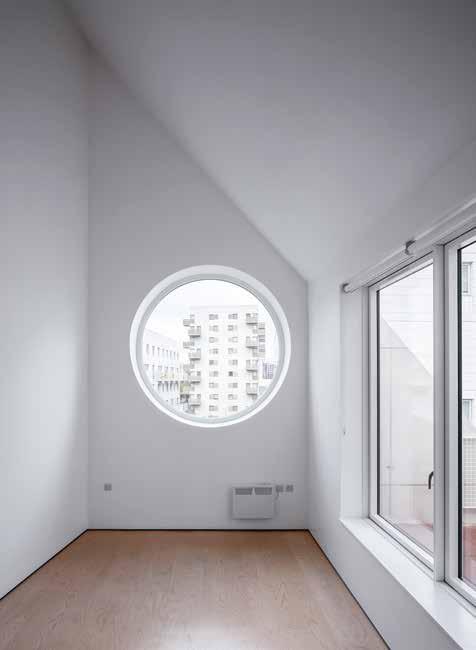
4 minute read
London A House for Artists – affordable housing as you’ve never seen it before
State of the art
Adaptable interiors, communal living and an arts programme – A House for Artists is affordable housing as you’ve never seen it before
From the moment that treasured British artist Grayson Perry threw his support behind a council housing project in Barking, east London, it was never going to be an ordinary block of flats. True to form, A House for Artists is a pioneering new housing model that not only offers affordable living and working spaces for artists and their families, but also provides a framework for these individuals to inspire others. At a time when creative talent is increasingly being priced out of the city, it capitalises on the value that art can bring to local communities.
“We’re trying to say that culture and art has to be in the centre of every community,” says Darren Rodwell, council leader for the London Borough of Barking and Dagenham, and the driving force behind the project. He is standing inside a space created exactly for this purpose, the open-plan ground floor of this five-storey building. With its raw interior and openable glass facade, it be a venue for a communityfacing arts programme led by the non-profit Create London. Residents are given affordable rents set at 65% of the market rate, in exchange for their participation in this programme. The hope is that it will help Barking to nurture a new generation of talent, says Rodwell: “If someone’s expertise can inspire others, that’s got to be good for the economy."
Continuing up, into the open-air walkways and generously daylit two- and three-bedroom apartments on the upper levels, it’s clear that there’s a lot more to this building than a clever business model. Designed by local architects Nicholas Lobo Brennan and Astrid Smitham of Apparata, A House for Artists offers a level of flexibility that is rare in modern residential design. The occupants have the opportunity to add or remove walls, or even relocate their kitchen, to better suit their homes to their needs. This is made possible by an efficient floor plan that provides windows and fire escape access at the front and back of each home. “You can essentially get a free room in your two-bedroom flat, if you need it for working from home, for a new child or if you have caring responsibilities,” says Smitham. “Or you can remove walls to make it a one-bed with a continuous space from back to front.”
Instead of making all 12 homes more or less the same, the architects have worked hard to ensure that variety is built in. A third-floor apartment boasts a double-height ceiling with the possibility of a mezzanine, while the three Words Amy Frearson
Images Ståle Eriksen
Facing page With flexible living space for 12 artists and their families, A House for Artists is an affordable, sustainable model for new housing

Above The approach to the apartments is outside – rather than through unwelcoming corridors Facing page Apparata’s building features playfully stacked geometric shapes, with a generous allowance for balconies


Above On the first floor, the appartments are connected, creating potential for co-living
Facing page Internal layouts are designed to be flexible to adapt to occupants’ changing needs apartments on the first floor come with heavyduty connecting doors that allow for different types of co-living arrangements. “Depending on who lives there, these could be used every day or only a couple of times a year,” suggests Lobo Brennan. All homes are also fronted by spacious balconies, deliberately large enough to allow room for outdoor furniture and plants. Unlike the “streets in the sky” you might find in the council housing of the 1960s, these decks feel like places to spend time, rather than simply pass through. “It’s really all about providing the spaces that will help form communities,” says Smitham.
A solid concrete structure eliminates the need for superfluous cladding materials and, with its low cement content, even reduces the building’s carbon footprint. The raw expression of this material gives the facade a monumental quality that feels appropriate, but which is softened by the quirkiness of square, circular and triangular cutaways. The effect is somewhere between a contemporary gallery and a children’s toy.
The first 16 artists moving into the building – selected by a panel that included Grayson Perry – are aged between 23 and 70, and cover a diverse range of disciplines, from photography to theatre. While there may be a sense that they’re getting something tailor-made, the project was actually delivered on a typical council housing budget. “The whole project was built with very normal products,” says Lobo Brennan. “There’s nothing bespoke going on here, it’s all off-the-shelf.” With that in mind, it’s hard not to wonder why design this good has to be reserved just for artists. With so much bad housing being built across the UK, A House for Artists offers a breath of fresh air.
Johan Delin

STYLE
Fashionable pursuits
Greet bag by Shrimps. Read the full story on p124











